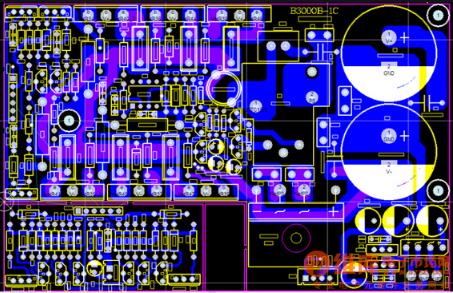PCB board is used as a benchmark for soldering temperature. Different soldering methods are used and the soldering temperature is also different. For example: Most wave soldering temperature is about 240-260 degree Celsius, vapor phase soldering temperature is about 215 degree Celsius, and reflow soldering temperature is about 230 degree Celsius. To be correct, the rework temperature is not higher than the reflow temperature. Although the temperature is close, it is never possible to reach the same temperature. This is because: that is, all rework processes only need to heat up a partial component, and reflow needs to heat the entire PCB assembly, whether it is wave soldering IR or vapor phase reflow soldering.
Another factor that also restricts the reduction of reflow temperature during rework is the requirement of industry standards, that is, the temperature of the components around the point to be repaired must not exceed 170°C. Therefore, the reflow temperature in the rework should be compatible with the size of the PCB assembly itself and the components to be reflowed. Since it is essentially a partial rework of the PCB board, the rework process limits the repair temperature of the PCB board. The heating range of localized rework is higher than the temperature in the production process to offset the heat absorption of the entire circuit board assembly.
In this way, there is still no sufficient reason to explain that the rework temperature of the entire board cannot be higher than the reflow soldering temperature in the production process, so as to be close to the target temperature recommended by the semiconductor manufacturer.
Three methods for preheating PCB components before or during rework:

Nowadays, methods for preheating PCB components are divided into three categories: oven, hot plate and hot air slot. It is effective to use an oven to preheat the substrate before rework and reflow soldering to disassemble the components. Moreover, the preheating oven uses baking to bake off internal moisture in some integrated circuits and prevent popcorn. The so-called popcorn phenomenon refers to the micro-cracking that occurs when the humidity of the reworked SMD device is higher than that of the normal device when it is suddenly subjected to a rapid temperature rise. The baking time of PCB in the preheating oven is longer, generally as long as about 8 hours.
One of the disadvantages of the preheating oven is that it is different from the hot plate and the hot air slot. During preheating, it is not feasible for a technician to preheat and repair at the same time. Moreover, it is impossible for the oven to quickly cool the solder joints.
The hot plate is the most ineffective way to preheat the PCB. Because the PCB components to be repaired are not all single-sided, in today's mixed technology world, it is indeed rare for PCB components to be flat or flat on one side. PCB components are generally installed on both sides of the substrate. It is impossible to preheat these uneven surfaces with hot plates.
The second defect of the hot plate is that once the solder reflow is achieved, the hot plate will continue to release heat to the PCB assembly. This is because even after the power is unplugged, the residual heat stored in the hot plate will continue to be transferred to the PCB and hinder the cooling rate of the solder joints. This obstruction to the cooling of the solder joint will cause unnecessary precipitation of lead to form a lead liquid pool, which reduces and deteriorates the strength of the solder joint.
The advantages of using a hot air slot for preheating are: The hot air slot does not consider the shape (and bottom structure) of the PCB component at all, and the hot air can directly and quickly enter all corners and cracks of the PCB component. The entire PCB assembly is heated uniformly, and the heating time is shortened.
Secondary cooling of solder joints in PCB components
As mentioned earlier, the challenge of SMT to PCBA (printed board assembly) rework is that the rework process should imitate the production process. Facts have proved that: First, preheating the PCB components before reflow is necessary for the successful production of PCBA; second, it is also very important to quickly cool the components immediately after reflow. And these two simple processes have been ignored by people. However, preheating and secondary cooling are more important in through-hole technology and micro-welding of sensitive components.
Common reflow equipment such as chain furnace, PCB components enter the cooling zone immediately after passing through the reflow zone. As the PCB components enter the cooling zone, in order to achieve rapid cooling, it is very important to ventilate the PCB components. Generally, rework is integrated with the production equipment itself.
After the PCB assembly is reflowed, slowing down the cooling will cause unwanted lead-rich liquid pools in the liquid solder and reduce the strength of the solder joints. However, the use of rapid cooling can prevent the precipitation of lead, make the grain structure tighter and the solder joints stronger. Please do not copy the content of this site
In addition, faster cooling of solder joints will reduce a series of quality problems caused by accidental movement or vibration of PCB components during reflow. For production and rework, reducing the possible misalignment and tombstone phenomena of small SMDs is another advantage of secondary cooling PCB components.